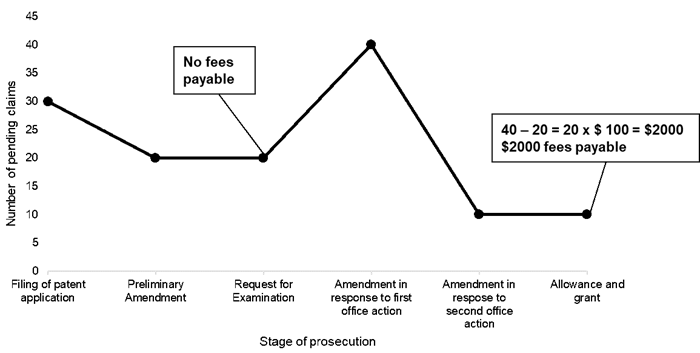
Publication
Insurance regulation in Asia Pacific
Ten things to know about insurance regulation in 19 countries.


Canada | Publication | June 15, 2022
On June 2, 2022, Rules amending the Patent Rules were registered. The rules make modifications to the draft version of the rules proposed by the Government of Canada in 2021 (see earlier article) and provide further direction on excess claim fees, the new continued examination scheme, and the new sequence listing rules. The rules are intended to keep Canada compliant with its obligations under the Canada-United States-Mexico Agreement (CUSMA).
Under the amended Patent Rules, excess claim fees will be assessed at two points in the application process. Applicants will pay:
* Halved for small entities.
Claims that define the subject matter in the alternative, including multiple dependent claims, count as a single claim for excess claim fee calculations.
Since the additional excess claim fee is calculated based on the greatest number of claims pending during examination, it is not possible to avoid excess claim fees payable with the final fee by merely reducing the number of claims before paying it. Patent practitioners should track the number of claims throughout examination to ensure payment of the appropriate excess claim fee at the time of allowance.
The introduction of excess claim fees presents particular challenges given the strict double patenting rules in Canada. In Canada, there can be double patenting as between voluntarily filed divisional applications, but there is case law holding that a divisional application filed responsive to a unity of invention objection is insulated from a double patenting allegation. Thus, it has become common practice to include claims directed to all embodiments of interest in the application of first instance with the goal of eliciting a unity objection. As the excess claim fee calculation at the final fee is based on the maximum number of claims in the application during the examination period, applicants will have to carefully consider the claim set presented to the examiner to minimize cost while also preserving the ability to safely pursue protection for all embodiments of interest.
Excess claim fees do not apply to any patent application in which examination is requested before October 3, 2022.
Some examples of excess claim fee calculations are illustrated in the charts below.



In the current system, applicants may receive an unrestricted number of examination reports from the Canadian Intellectual Property Office (CIPO). The examiner can cease examination by issuing a Final Action or a Notice of Allowance.
The amended Rules introduce a new continued examination scheme that limits the number of examination reports that may be issued before examination ceases. Applicants will have to file a Request for Continued Examination (RCE) and pay a prescribed fee (the standard fee is $816 CAD, which is halved for small entities) after three examination reports have been issued. After filing this initial RCE and paying the prescribed fee, applicants will be required to file an additional RCE and pay the prescribed fee for every second examination report issued thereafter. Failure to timely file an RCE will result in deemed abandonment of the application.
These changes will eliminate the current option of withdrawing a notice of allowance to return an application to examination and will replace it with the option to file an RCE, which will have the same effect of returning the application in examination (at which time it may be voluntarily amended to present new or amended claims).
The new RCE requirements do not apply in any patent application in which examination is requested before October 3, 2022.
Under the new system, examination can also cease if a Notice of Allowance or a new Conditional Notice of Allowance is issued. A Conditional Notice of Allowance is a discretionary notice that will inform applicants that their application is in condition for allowance, but certain minor defects in the application must be addressed. This will enable applicants to address the defects and pay the final fee to proceed to grant rather than go through another round of examination. The rules relating to a Conditional Notice of Allowance will come into force on October 3, 2022.
Sequence Listing Standards
The rules require sequence listings to be in a format that is compliant with Standard 26 (ST.26), the PCT sequence listing standard recently adopted by the World Intellectual Property Organization (WIPO). The rules also require at least one of the languages of the free text in the sequence listing be English or French.
Applications filed before July 1, 2022, are permitted to contain sequence listings in either the new WIPO sequence listing standard ST.26 or the previous ST.25 format. Sequence listings contained in applications filed on or after July 1, 2022, will be required to be in a format that is compliant with ST.26.
Other notable amendments relate to:
The authors wish to thank Sandeep Patel, law student, for his help in preparing this IP monitor.

Publication
Ten things to know about insurance regulation in 19 countries.
Subscribe and stay up to date with the latest legal news, information and events . . .
© Norton Rose Fulbright LLP 2025